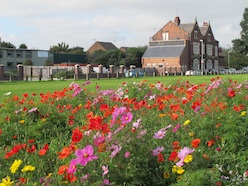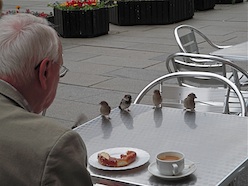Aronson's NCEAS Global Survey Shows High Urban Biodiversity

 Myla Aronson and colleagues are redefining the term "concrete jungle" in a new paper in Proceedings of the Royal Society B. The study, a product of their National Center for Ecological Analysis and Synthesis (NCEAS) working group, compared bird and plant species found in urban and non-urban environments, and determined whether certain landscape features influenced those results.
Myla Aronson and colleagues are redefining the term "concrete jungle" in a new paper in Proceedings of the Royal Society B. The study, a product of their National Center for Ecological Analysis and Synthesis (NCEAS) working group, compared bird and plant species found in urban and non-urban environments, and determined whether certain landscape features influenced those results.
Aronson’s findings were surprising. Contrary to the popular belief that cities are depauperate of biodiversity, the 147 surveyed cities were home to 20% of the world’s bird species and 5% of the world’s plant species, including 36 and 65 International Union for the Conservation of Nature (IUCN) Red Listed bird and plant species, respectively. And while there was some overlap in species across cities – certain taxa, such as rock pigeons and annual meadow grass, are cosmopolitan – the group found that the composition of cities was reflective of regional species pools, not of a particular set of city slickers that can be found in any urban area worldwide.
 When estimates of species density (number of bird or plant species per unit area) were compared with non-urban habitats, though, cities were less impressive. Aronson reports that species density in cities was about 8% (for birds) and 25% (for plants) of that of non-urban environments, a result she attributes to human-related “filters” to the regional species pool, such as city age and urban land cover.
When estimates of species density (number of bird or plant species per unit area) were compared with non-urban habitats, though, cities were less impressive. Aronson reports that species density in cities was about 8% (for birds) and 25% (for plants) of that of non-urban environments, a result she attributes to human-related “filters” to the regional species pool, such as city age and urban land cover.
If human activities are a big factor, then what can people do to promote urban biodiversity? “The more remnants you can preserve or restore, the more species a city can support,” says Aronson, citing a positive relationship between amount of intact vegetation and species density. “While that seems intuitive, it hasn’t actually been shown at a global scale.”
The group's research has also been covered by BBC news, ABC News Australia, and EcoBusiness.
February 2014


